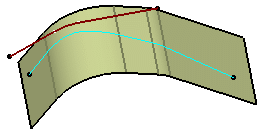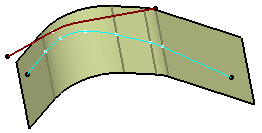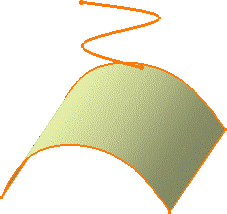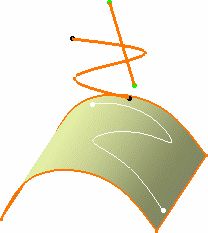Creating Projections | |||||
|
| ||||
Project Elements
You can project the elements normal to the supporting element or along a direction.
![]()
Smooth Elements
You can smoothen the projected elements by defining appropriate continuity.
- Select any one of the Smoothing option:

- None: deactivates the smoothing result With support surface: the smoothing is performed according to the support. As a consequence, the resulting smoothed curve inherits support discontinuities.
- Tangency: enhances the current continuity to tangent continuity
- Curvature: enhances the current continuity to curvature continuity
-
You can specify the maximum Deviation for G1 or G2 smoothing by entering a value or using the spinners.
If the element cannot be smoothed correctly, a warning message is issued.
Moreover, a topology simplification is automatically performed for G2 vertices: cells with a curvature continuity are merged.
Warning: Only small discontinuities are smoothed in order to keep the curve's sharp vertices. -
3D Smoothing: the smoothing is performed without specifying any support surface. As a consequence, the resulting smoothed curve has a better continuity quality and is not exactly laid down on the surface. As a consequence, you may need to activate the Tolerant laydown option. Refer to General Settings for further information. The 3D Smoothing option is available if you previously select the Tangency or Curvature smoothing type.
With 3D smoothing option selected With 3D smoothing option cleared
With 3D smoothing option cleared



